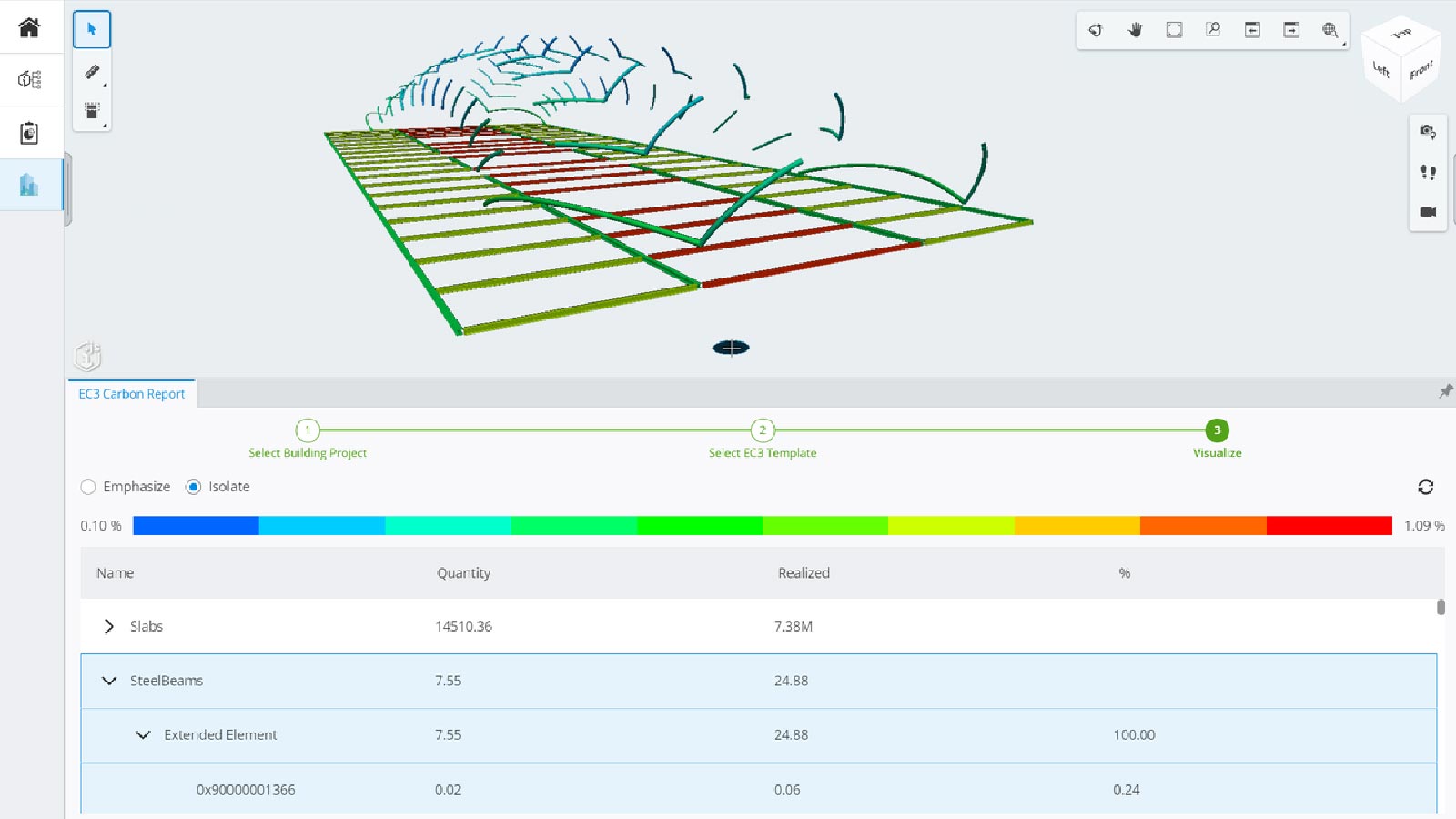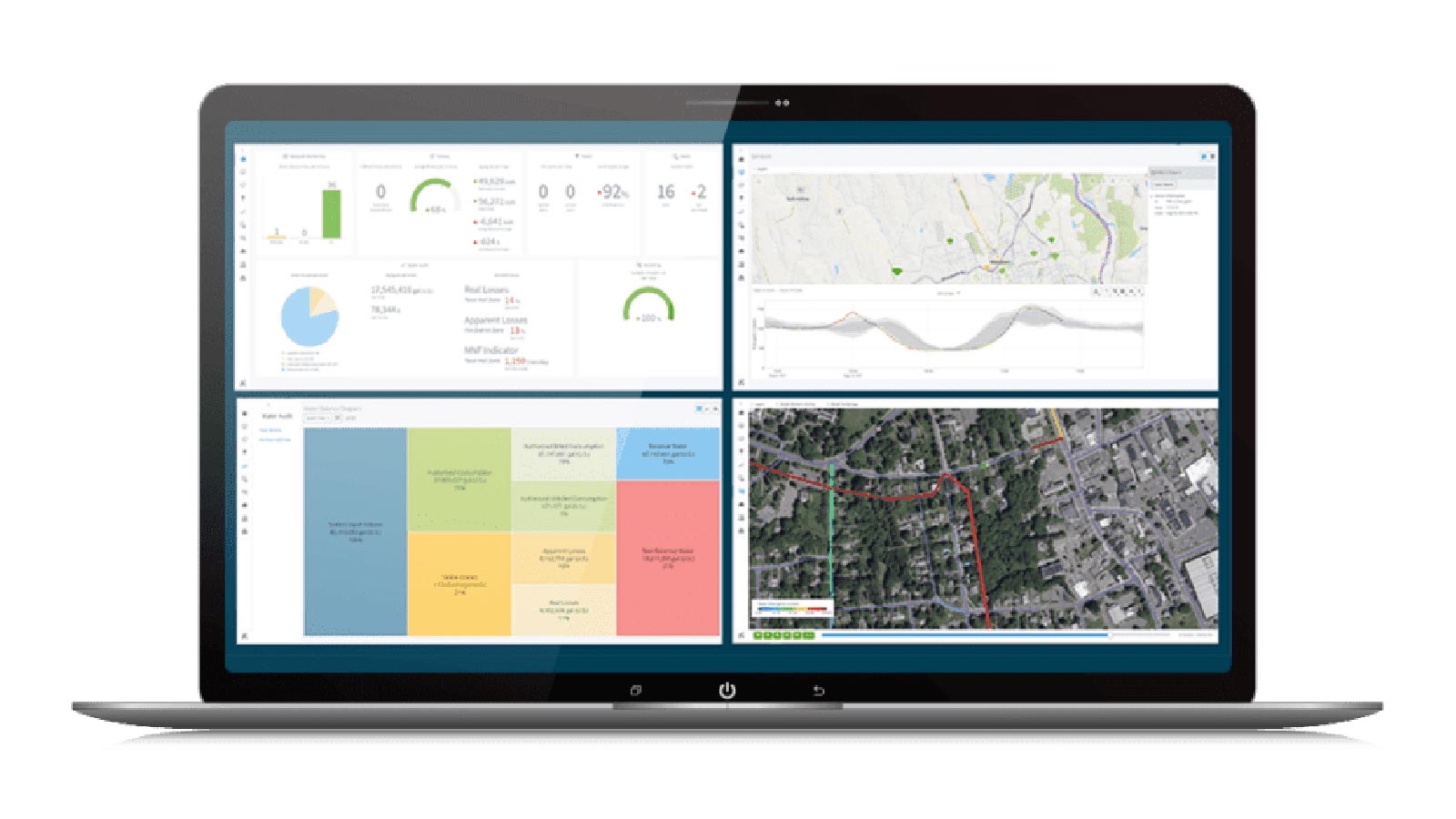
By Rodrigo Fernandes, Director, ES(D)G
“As a company involved in the design of new infrastructure projects, we’re very interested in quantifying environmental footprints (including embodied carbon) along the early stages of the project – early design, detailed design, procurement, etc. Can you support us through the iTwin ecosystem?
Yes! We are conscious that the most significant opportunities for reducing the carbon footprint in infrastructure (as well as other footprints such as materials, waste, water, and energy) exist in the early stages of projects, such as design. To respond to this need, Bentley adopted a strategy to support our users in addressing these opportunities for footprint reporting and minimization.
Currently, Bentley supports four different ways to facilitate the estimation of environmental footprint estimation in early design stages:
- Through the iTwin Platform: Carbon Service (API)
Any infrastructure project available in the iTwin ecosystem can be seamlessly exported to industry partners (Building Transparency’s EC3; One Click LCA) for carbon calculation and reporting. This significantly reduces the effort and time required to aggregate the data for generating the Bill of Quantities / Bill of Materials, and then computing embodied carbon. We currently provide this possibility through our iTwin platform, allowing Independent Software Vendors (ISVs) and other third-party organizations to integrate this carbon service into their developed iTwin-powered tools, allowing them to keep their own intellectual property (IP).
- Through the use of iTwin Models (via iTwin Platform)
Suppose ISVs or engineering companies want to do carbon calculations and integrations through their specific carbon calculation tools and databases. In that case, they may benefit from the iTwin model integration without specifically using the iTwin platform carbon service. They would still benefit from iTwin and its advantage as an open, vendor-agnostic platform capable of federating data from different data sources and formats.
- Through iTwin Experience
In parallel, we have been working on “carbon enablement” through Bentley iTwin products to support all organizations that don’t have a code development team or don’t want to spend resources on building specific carbon tools. By the end of June, we announced the availability of new carbon assessment capabilities in iTwin Experience. With the new capabilities, infrastructure professionals can fully automate embodied carbon calculation reports and impact analyses, enabling them to explore multiple design choices faster and eliminate manual data exports and normalization. iTwin Experience provides a ready-to-go, bi-directional integration with EC3. This enablescarbon assessments to be visualized in a digital twin without the need to write code. iTwin Experience exports a data model to EC3 – a free tool that users need to separately register for – which performs the embodied carbon calculations and returns results that iTwin Experience seamlessly reads and visualizes.
Organizations that want to include carbon assessment workflows in their infrastructure projects without developing proprietary iTwin-powered apps will benefit from the newly available carbon calculation capabilities in iTwin Experience. The capabilities also unlock the integration of carbon assessment workflows with other Bentley products and solutions for designing and managing infrastructure projects.
These capabilities have been released in “Preview” mode, in parallel with an Early Access Program (EAP) where a restricted group of users and partners already have access to these new features. So far, the feedback from early adopters is quite positive, and we expect to come up with more information soon.
You can find more information in our blog post, Accelerating Decarbonization with iTwin Experience Embodied Carbon Assessment.
Feel free to reach directly to me, Rodrigo.fernandes@bentley.com, if you want to know more and potentially explore access to this EAP.

Figure 1: Embodied carbon impact calculation from EC3 visualized in iTwin Experience. Design elements are color coded based on the severity of realized embodied carbon.
4. Through OpenBuildings Designer (OpenBuildings Energy Simulator)
In the specific case of vertical infrastructure, if the focus is exclusively on designing or simulating building energy performance, Bentley also provides OpenBuildings Energy Simulator, allowing designers to fully contemplate and assess design trade-offs for both new construction and retrofits. With these capabilities, users can easily simulate heating and cooling loads, assess overheating for occupant comfort, simulate HVAC performance, comply with government building regulations for energy performance, simulate internal daylighting levels, and analyze energy usage.
“What about existing infrastructure assets? Does Bentley support the quantification (or reduction) of environmental footprints while the assets are operating?”
Definitely! We are currently exploring strategic partnerships for bringing more operational analytics and insights to environment and sustainability performance during asset operations, in addition to the valuable support we already provide – particularly in what relates to energy, water, and/or chemical footprints.
Here are two great examples from our product portfolio:
WaterSight – This solution provides real-time insights and capital planning for water supply and distribution systems. This water infrastructure digital twin application brings SCADA, GIS, hydraulic modeling, client information, and historical failure data into a connected data environment to deliver cost-effective, real-time operations strategies. OpenFlows WaterSight connects all data sources and creates a continuous, consistent digital representation of the operated assets. Among the various benefits of the solution WaterSight provides live water audit calculations, enabling it to quantify where the water is going and how much water is being lost.
In addition, the solution provides pump performance and energy management capabilities, allowing the evaluation of individual or total pump station performances, determining best operation points, and quantifying real-time and historic energy footprint, associated costs, and energy efficiency. As a result, WaterSight not only facilitates quantification of water and energy footprints, it also typically results in a 20% reduction of non-revenue water loss and a 20% increase in energy efficiency in pumps.

Figure 2: WaterSight
Assetwise 4D Analytics – Part of AssetWise Digital Twin Services, enables 4D visualization and analytics visibility for “evergreen” digital twins. 4D Analytics uses advanced analytics and machine learning, combining geospatial, temporal, and time series data to provide spatial and temporal insights into current conditions and trends and predict future performance. Data sources can include any information accessible to AssetWise, including inspections, work history, and extremely large data sets such as IoT devices. Results can be understood using extensive graphing and dashboarding capabilities in the digital twin’s context. 4D Analytics can then be used to monitor and optimize energy consumption, as well as chemical usage.



